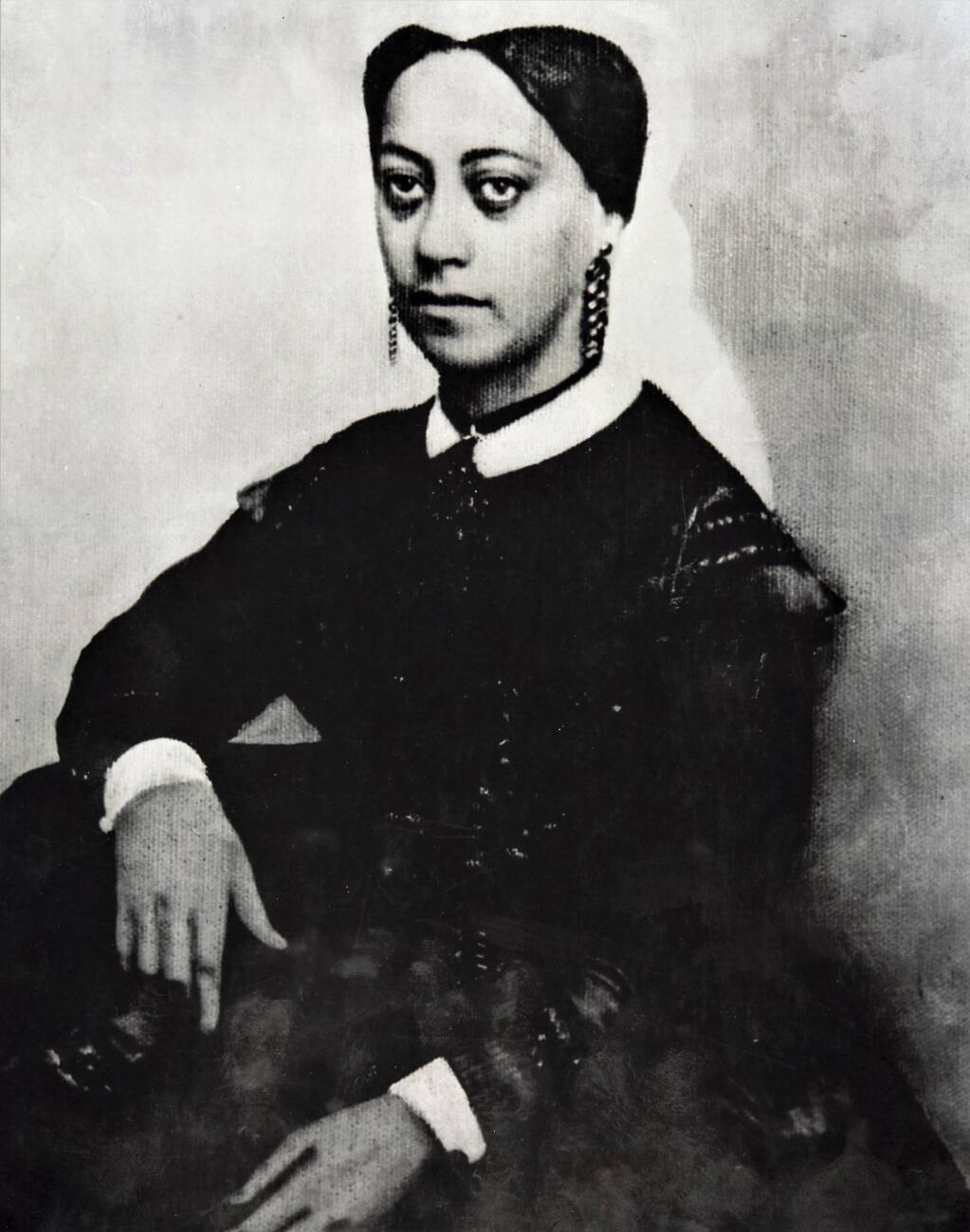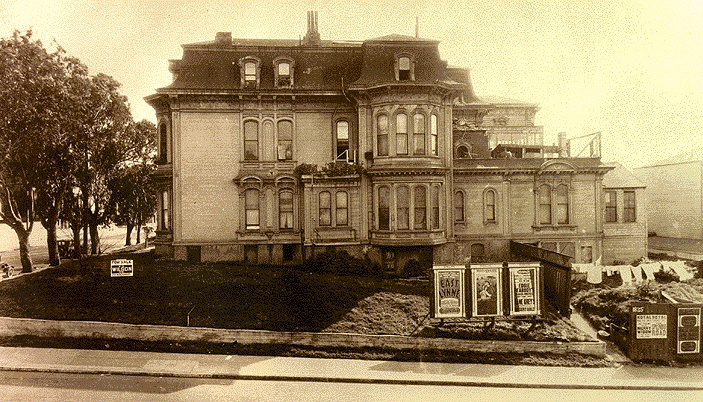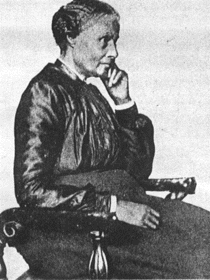
Gael at Heart: California's First Black Millionaire Helped Get Saint Mary’s Off the Ground
Mary Ellen Pleasant is widely considered the mother of California’s civil rights movement. She was also one of the College’s early donors.
Mary Ellen Pleasant never attended or worked at Saint Mary’s College. It’s possible she never set foot on the campus. But her influence on the College is no less profound: She helped it build a new home in the East Bay.
Born in 1814, Pleasant was among the first Black Americans to become millionaires. She funneled much of her fortune toward causes she believed in—including Saint Mary’s College of California. Records show she was one of its "founding" donors, supporting the College’s relocation from San Francisco to Oakland and the construction of a new campus there in 1892, just three decades after Saint Mary’s opened its doors. It's possible she even donated toward the subsequent reconstruction of the campus following a devastating fire in 1894. All told, Pleasant gave the modern equivalent of $10,000 toward the young college.
“Saint Mary’s needed money for the relocation, and had a hard time finding it, to be perfectly honest,” says Ronald Isetti, Professor Emeritus of History and author of On these Promising Shores of the Pacific: A History of Saint Mary’s College. “So her contribution was significant.”
Pleasant’s gift to Saint Mary’s was just one of many examples of a life of generosity. During her lifetime, she supported the Underground Railroad, sued against discrimination, and even bankrolled the storied Harpers Ferry Rebellion.
Much of Pleasant’s biography remains shrouded in “hearsay,” notes writer Mary Volmer ’01, MFA ’05. Volmer is also an Athletics Mission and Ministry Fellow and adjunct professor at SMC. Volmer points out that while African Americans in the Bay Area reverently referred to Pleasant as “Black City Hall,” others accused Pleasant—baselessly—of practicing voodoo, running brothels, and even committing murder.
Volmer became intrigued with Pleasant’s story while researching a novel. Now Volmer regularly gives presentations on her and other forgotten women of the Gold Rush era. Rumors aside, Volmers says, “Pleasant’s life—either fabricated or saintly or both—is pretty impressive.”
Capitalist and Abolitionist
By many accounts, Pleasant was born into slavery in the United States, the daughter of a Caribbean voodoo priestess and a Virginia planter—although Pleasant herself always disputed this. “As a matter of fact, I was born [to free parents] in Philadelphia,” she insisted in her 1901 autobiography.
Regardless, by the 1820s she was living in New England, working at a dry goods shop and honing her business acumen. She eventually met her first husband, James Smith, a carpenter and fervent abolitionist. Together, they helped other Black Americans secure freedom through the Underground Railroad, ferrying them north to Nova Scotia.
When Smith died in the 1840s, he left his wife a hefty inheritance. Pleasant remarried in 1848 and soon headed west, arriving in San Francisco at the height of California’s gold fever. She quickly found a job as a cook, eavesdropping on the wealthy men she served and filing away financial tips.
During her lifetime, Pleasant supported the Underground Railroad, sued against discrimination, and even bankrolled the storied Harpers Ferry Rebellion.

Pleasant invested shrewdly and widely. She put money in Wells Fargo and mining operations. She started up restaurants, boarding houses, and a thriving chain of laundries. “She had her fingers in everything,” says Volmer. “Even if you didn't know her, she was probably doing something that was impacting your life in some way.” And that secrecy was intentional: To avoid controversy, most of Pleasant’s investments were under the name of capitalist Thomas Bell, a white man and Pleasant’s frequent business partner. Together, they amassed some $30 million, the equivalent of $745 million today.
While Pleasant considered herself a “capitalist by profession,” her ultimate legacy was advancing civil rights and racial justice. She continued to aid the Underground Railroad, financing safe houses and employing formerly enslaved men and women; she likely sheltered runaways herself. She also contributed to San Francisco’s Athenaeum Building—the first Black circulating library in the West—and she sued the city’s streetcar company for discrimination in 1866. Pleasant’s case ultimately paved the way for desegregation of public transit in California.
In her later years, Pleasant revealed she had funded and helped plan abolitionist John Brown’s raid on Harpers Ferry, Virginia. In October 1859, Brown led a group of 19 men in seizing a federal armory, hoping of sparking a rebellion of enslaved people. The raid ended with Brown and most others captured or killed, but Pleasant remained proud of her role; decades later, at her request, her gravestone would read, simply, “She was a friend of John Brown.”

Living to Serve
Pleasant’s 1892 donation to Saint Mary’s College was one of her last acts of philanthropy. That same year, her longtime business partner Thomas Bell died. Bell’s widow began waging a vicious court battle against Pleasant, alleging she had manipulated the Bells and stolen their fortune. As a result, Pleasant lost most of her money and property, including the mansion where she lived in San Francisco. She died a few years later, on January 11, 1904.
Pleasant’s achievements were many, but even a multimillionaire could not escape the deep-seated racism of her era. “Now, she would have been the governor or some high position of power,” Volmer surmises. “She was that savvy.”
Why Saint Mary's? "I think she perhaps resonated with the Lasallian mission of educating the poor," says Mary Volmer. "Serving the poor and people of color was always one of her primary goals."

For Pleasant, though, status was never the entire goal; service was. In that, she embodies the core values of the college she helped nurture through its early years. “She worked her whole life behind the scenes,” Volmer says. “She was never in a position of overt authority, although she had her own ways of influencing the world.”
We may never know why Pleasant gave to Saint Mary’s. Historian Ronald Isetti believes that Pleasant was simply acting philanthropically. “She thought it was incumbent for her to give money to various institutions and causes, and so she did.”
But Volmer’s hunch is that the mission of the College appealed to her. “I think she perhaps resonated with the Lasallian mission of educating the poor,” Volmer says. “Serving the poor and people of color was always one of her primary goals.”
Whatever the reason, Pleasant saw Saint Mary’s College as a worthy investment. It only seems right that current Gaels continue to keep her memory—and that legacy—alive.
Keep an eye on the complete list of this year's 44 Days events, including a March 13 conversation with Angela Harrison, author and aunt of George Floyd.
Interested in supporting Saint Mary’s longstanding mission of accessible education? Consider giving.
Hayden Royster is the Staff Writer in the Office of Marketing and Communications. Write him.